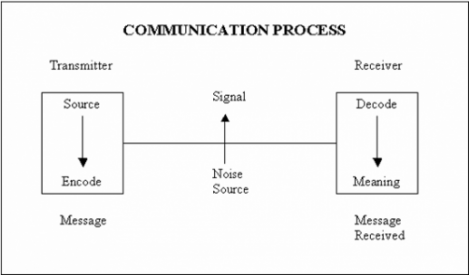The linear model is the most basic illustration of the communication process; it consists of only two people with the source initiating a sentence of three words and the receiver responding with a nonverbal cue. The adjective "linear" suggests that the interaction moves in a straight line from a beginning to end point through specific stages (Defleur, 2005).
1. Deciding on the message: The person serving as the source of information (or the beginning of the process) decides on a message to be communicated to the receiver in order to achieve a specific goal.
2. Encoding the message: The source scans his/her memory for symbols (words and/or gestures) and their associated meaning so as to put together a message in a certain pattern that intentionally communicates a particular meaning.
3. Transmitting the message: The message is transformed into physical information (such as sound waves or hand gestures) so that it can cross the distance and be received by the other person involved in the interaction.
4. Perceiving the information: The receiver attends to the physical information that arrives and identifies the symbols that had been coded.
5. Decoding and interpreting the message: The receiver compares the incoming symbols with meanings stored in his/her memory and then chooses those meanings that appear best for interpreting the message.
(DeFleur, 2005)

